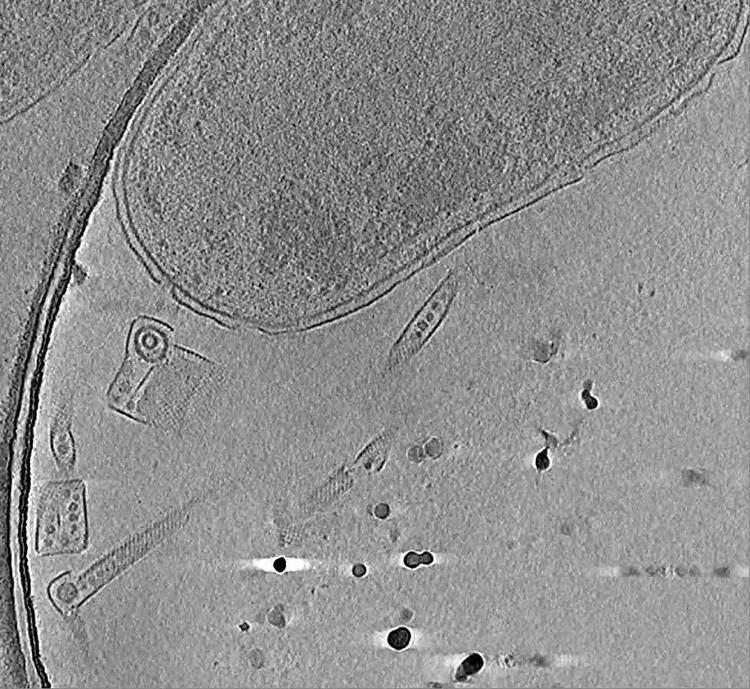 | ||
Carbon Grid Fibre-reinforced plastic (FRP) structures are used for reinforcing concrete.
Contents
Technology
Carbon fiber FRP Grids are structural reinforcement materials that improve the performance of concrete structures such as insulated wall panels, architectural panels, double tee parking garage tee beams, concrete countertops and other products. The carbon grids can be used in place of welded wire mesh in most structures and is imbedded the same way as a welded wire mesh. Carbon fiber's high strength, high modulus, resistance to creep and excellent fatigue properties allow the carbon grid to provide excellent crack and structural reinforcement. Ideally the carbon tows (yarns) are constructed on top of each other in a superimposed design those aides with fiber alignment and toughness of the finished grid.
Applications with Concrete in General
Concrete is inherently strong in compression and weak in tension. To address this issue, concrete is often reinforced with steel in the form of rebar, welded wire mesh or stressing strands (Prestressed or post-tensioned). In theory, the concrete has to crack when loaded in tension for the steel to begin to share the load in the steel reinforced concrete composite. The concrete helps protect the steel by providing an alkaline environment (ph=13 in many cases) to retard corrosion of the steel. To properly protect the steel the concrete needs to cover the steel by more than the minimum thickness, not have large cracks and not have its chemistry altered by environmental factors like chloride attack from deicing salts, carbonation, etc.. ACI and PCI (American Concrete Institute, Precast/Prestressed Concrete Institute) codes specify minimum cover thicknesses depending on the application of the structure. In practice, steel often corrodes due to improper placement of steel reinforcement, moisture drive through cracks, poor workmanship, environmental effects such as deicing salts or coastal environments and a myriad of other causes. Due to the inherent properties of steel reinforced concrete, many structures are expensive, heavy and costly to maintain. The repair of these structures is a multibillion-dollar business worldwide according to industry sources (ICRI International Concrete Repair Institute).
Applications with Concrete Panels
Multi layer concrete structures (like insulated walls panels) use a sandwich technology that use insulation layers placed in between two or more layers of concrete. Often these concrete layers are tied together by sections of solid concrete, metal tie structures or FRP pin structures. Often, the design of the wall panel is limited by lack of effective insulation in the tie areas or poor structural performance of the tie design or solid section. These limitations cause structures to be weaker, heavier and more costly both in manufacturing and ownership.
Benefits
Carbon grids provide a corrosion resistant reinforcement that has a higher modulus of elasticity than steel that is imbedded inside concrete (similar to conventional steel mesh). This allows for designs that don’t require as much concrete cover, so concrete structures can be lighter and much more durable than before. For instance, using carbon fiber grid in insulated wall panels can provide a stronger, lighter, more thermally efficient panel than is practical with conventional designs. Due to the lighter weight less energy is required to provide the necessary concrete and ship products adding an environmental incentive to using this technology.
FRP fabrics that are used as external reinforcements are impregnated with polymer on the jobsite and have to be bonded to a surface of a concrete structure. In contrast, carbon grids provide an internal reinforcement and have fibers that are impregnated with a polymer (typically epoxy) in a factory rather than on the job site, saving time and insuring consistent quality. Also, the open spaces of the grid provide a mechanical bond to transfer load within the concrete structure.
Additional benefits of the carbon grid structure are that it is light, easy to handle, non-magnetic and easier to cut than steel. These properties allow for use where steel is impractical or cumbersome.
History
Carbon grids have been manufactured by Chomarat North America (formerly TechFab LLC) since 1998 and have found commercial uses in concrete countertops, shotcrete, ornamental concrete, caststone products, precast insulated wall panels, double tee beams and a myriad of other concrete products. These materials have also been used in numerous repair projects including the Naumburg Band shell in New York City cited on the website www.carbongrid.com. A variety of product strengths and apertures are offered depending on the application.
Limitations
The main limitation of the carbon grid is the additional cost of carbon as compared to mild carbon steel (with rising energy costs this gap has narrowed). In addition, since carbon is a linear elastic material (without a yield point), reinforced concrete structures have to be designed to account for this. Carbon fiber grids can be used in design by following the American Concrete Institute - ACI 440 methodology similar to FRPrebar. Typically, the structure will also use steel in an appropriate location or be over designed so that the structure fails by crushing the concrete in tension providing ductility.
